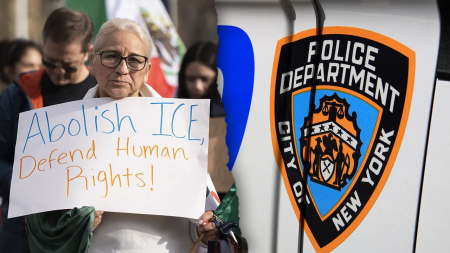The heart of Lower Manhattan became a tragic scene of gang violence on December 5th, 2023, as a dispute between rival migrant gangs culminated in a fatal stabbing. This incident, initially misconstrued as a hate crime, has unveiled a complex web of gang activity among New York City’s migrant population, raising concerns about public safety and the challenges of integrating newcomers into the city’s fabric. The incident unfolded around 7:43 p.m. when three unidentified assailants, their faces concealed by COVID masks, confronted two teenage migrants, Yeremi Colino, 17, and Alan Magalles Bello, 18. The confrontation quickly escalated into violence, leaving Colino fatally wounded with a chest stab wound and Bello injured with a stab wound to his arm. Colino, a resident of the Roosevelt Hotel, a city-funded migrant shelter in Midtown Manhattan, succumbed to his injuries at a nearby hospital. Bello, thankfully, is expected to recover.
Initial reports suggested that the attack was motivated by the victims’ inability to speak English, prompting swift condemnation from several Democratic politicians who labeled it a hate crime. Congressman Dan Goldman, whose district encompasses parts of Manhattan, publicly denounced the perceived “racist, xenophobic hatred,” demanding full prosecution of the suspects. This narrative, however, quickly unraveled as video evidence emerged, revealing a different story. Security footage captured the victims confronting the larger group about displaying gang signs, a provocation that sparked the fatal brawl. This revelation shifted the focus of the investigation from a hate crime to gang-related violence, adding a new layer of complexity to the already tragic event.
The victims, Colino and Bello, were reportedly affiliated with “Los Diablos de la 42” (The Devils of 42nd Street), a Venezuelan gang believed to be connected to “Tren de Aragua,” a notorious international Venezuelan criminal organization. This link raises concerns about the potential infiltration of transnational gangs into the city’s migrant population, posing a significant challenge to law enforcement. The suspects, also believed to be gang members within the Caribbean migrant community, remain at large, though police have released images captured from surveillance footage in hopes of identifying and apprehending them.
The incident has ignited a debate about the city’s handling of the migrant influx and the potential consequences of housing large numbers of individuals, some with unknown backgrounds, in close proximity. The emergence of gang activity within these shelters has underscored the need for enhanced security measures and thorough vetting processes to prevent such violent incidents. The case also highlights the complexities of integration and the challenges faced by newly arrived migrants, some of whom may be vulnerable to recruitment by criminal organizations seeking to exploit their precarious situation. The NYPD’s Detective Bureau, led by Assistant Chief Jason Savino, is actively investigating the incident. They have noted that the “Diablos de la 42” gang has circulated messages mourning Colino’s death and vowing retribution against the rival Caribbean gang, raising fears of escalating retaliatory violence. This development emphasizes the urgent need for effective intervention to prevent further bloodshed and ensure the safety of all residents, both native and newcomer.
The tragic stabbing of Yeremi Colino underscores the multifaceted challenges facing New York City as it grapples with a significant influx of migrants. While offering refuge and support to those seeking asylum is a humanitarian imperative, ensuring the safety and security of all residents remains paramount. The incident has brought to the forefront the urgent need for comprehensive strategies to address gang activity, facilitate successful integration of newcomers, and prevent further violence within the city’s migrant communities. The ongoing investigation and the search for the perpetrators will undoubtedly shed further light on the intricate dynamics of gang involvement within the migrant population, informing future policies and interventions aimed at fostering a safe and inclusive environment for all.
This incident serves as a stark reminder of the complexities of managing large-scale migration and the importance of addressing the multifaceted challenges it presents. While providing support and resources to those seeking refuge remains crucial, bolstering security measures, implementing thorough vetting processes, and developing strategies to address gang activity are equally vital to ensure the safety and well-being of all residents. The tragic loss of Yeremi Colino underscores the urgency of these efforts and the need for a comprehensive approach that balances compassion with public safety. The ongoing investigation and the subsequent actions taken by law enforcement and city officials will be critical in shaping the future management of migrant populations and preventing further acts of violence.










